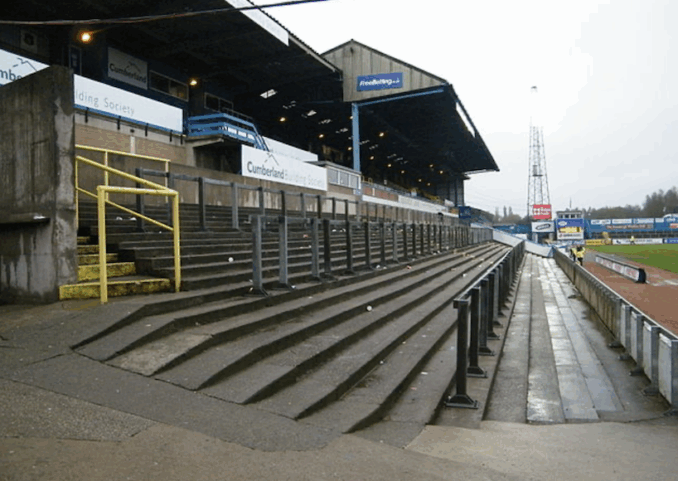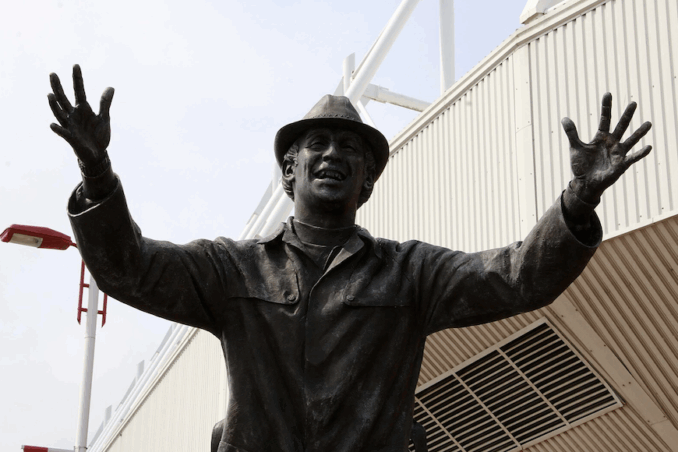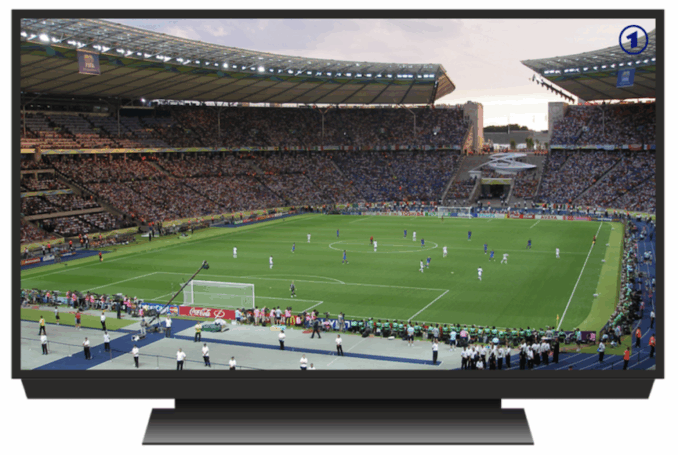
Gary Lineker in 2021,
David Woolfall – Licence CC BY-SA 3.0
I only saw Gary Lineker play once. Our local eleven were away to Leicester City in a fourth-round FA Cup tie. This was 1985 – a mere 40 years ago. The game ended in a one-nil victory to them, but it wasn’t the prolific Lineker who scored the only goal that separated the teams.
In my mind’s eye, it was Alan Smith – later of Arsenal and England – who netted the Filbert Street winner. However, reference to that inconvenient and contradictory beast known as the record book shows that it was namesake Bobby Smith who scored for the home team in the 34th minute.
What I do recall correctly is a decent game of football, with a good enough showing from ourselves – Second Division to Leicester’s First – to be clapped off by both sets of fans at the end of the match.
Leicester’s passage to the fourth round had been far from straightforward. During their previous tie, away at Northern Premier League Burton and played at Derby County’s Baseball Ground, Lineker scored a hat-trick in what should have been a decisive 6–1 victory. However, the match had to be replayed at a neutral venue upon the instruction of the FA, after Burton goalkeeper Paul Evans being knocked unconscious by a missile thrown from the crowd.
Showered with objects throughout the fixture – including a beer tin full of sand – it was a block of wood torn from the seating in the Leicester end that laid out the unfortunate number one. Among those gathering around the stricken keeper was his youthful manager – a 36-year-old Neil Warnock – in his second managerial job following a season in charge at Gainsborough Trinity.
The following decades were to see Warnock elevated to a kind of legendary status, with another seventeen appointments – including repeat appearances in the dressing rooms of Crystal Palace, QPR and Huddersfield. Colin (yes, Neil Warnock is an anagram of ‘Colin W*nker’) also had a column in The Independent entitled What I’ve Learnt This Week.
The replayed cup tie saw a 1–0 victory to Leicester at a neutral ground – Highfield Road, the 106-year-old home of Coventry City, now gone and replaced by a housing estate.
Carlisle (for it is they who are my local XI) earned a fourth-round trip to the East Midlands after a 1–0 win at home to Dagenham. Filmed in the dressing room after an away win at Swindon, the non-league giant-killers let out an audible groan on hearing that the draw rewarded them with a 650-mile January round trip to Brunton Park.
Goalkeeping also caught the headlines in the next round, with Carlisle keeper McKellar playing a blinder. Bill Anderson of the Leicester Mercury described his performance as ‘stunning’ in a ‘bit too close for comfort’ victory for the Foxes.
In the kind of punchy sports journalism that local papers excelled at before such reportage migrated to apps and socials, McKellar gave City headaches. Gary Lineker was first to reach for the aspirins after the visiting stopper prevented the number 8 from scoring his second hat-trick of the competition with a mixture of good and lucky saves.

Main Stand Carlisle Utd,
Carlisleprogrammes – Licence CC BY-SA 3.0
As we all know of Lineker, the eye lingers over the visitors’ team sheet, pondering of those who didn’t go on to develop a recently ended career at the BBC. Jack Ashurst, whose wife is often active on the nostalgia Facebook pages, left for Second Division Leeds United. Nineteen-year-old Ian Bishop saw service as a fan favourite at Manchester City and West Ham.
Don O’Riordan made an impressive tour of the footballing world before returning to his native Ireland, where he continues to coach. Malcolm Poskett was late of Watford and Brighton.
Not on the pitch but about the place between a loan spell from Sunderland and a permanent move, was John Cooke. If you watched the 2018–2020 hit Netflix series Sunderland ‘Til I Die, “Cookie” was the well-liked Stadium of Light kit man.
Mike McCartney, who died in 2018 aged only 63, played near 300 games for Carlisle, sandwiched either side of time away that included appearing in the First Division under Laurie McMenemy in THAT Southampton team. After returning north and retiring from playing, he managed Gretna during their English non-league days.
A big shout-out to substitute John Halpin. The ex-Celtic left winger departed the club for Rochdale in 1992 but returned soon after, taking on numerous roles in the following decades. Best known as a well-respected Community Sports Trust manager, he retired as recently as autumn 2022 – 41 years after being signed by Bob Stokoe.
Stokoe, an FA Cup-winning manager with Sunderland and a winning player with Newcastle United in 1955 – the last time the Magpies won a domestic trophy until the League Cup win earlier this year – took the Cumbrians into the Second Division in 81/82. At one point in the 83/84 season they looked set for promotion to the top flight. Fading over the last dozn games, they finished 7th, 16 points behind a third promotion place occupied by Newcastle United and Kevin Keegan.
They say your club chooses you, not the other way around. They’re not wrong. I’ve tried to escape the windswept terraces of this northern outpost, but can’t. The connections are too binding. When my mother was dying, Mrs Stokoe, Jean, a member of the same branch of the Women’s Institute as my mother, would visit.
Her husband stepped down to be replaced by Harry Gregg, a former Manchester United goalkeeper of the Busby Babe generation. A giant of a man, when this awestruck 20-year-old chatted to the approachable Ulsterman, I was aware of being zero degrees of separation from someone who ran into a burning aeroplane to save the life of a stewardess and her unborn baby on a snow-swept Munich airfield on 6th February 1958.
While all of this was happening in Carlsle, what of Lineker?
A talented and natural goalscorer, the son of a popular fruit and veg trader in Leicester market, Barry Lineker, Gary joined his local club aged 16 after leaving school in 1977. Turning professional in the 1978–79 season, he made his senior debut on New Year’s Day 1979.
After their victory over the Cumbrians, Leicester drew Millwall away and lost 2-0 at Cold Blow Lane. As the competition progressed, by mid-April Everton had beaten Luton 2-0 in a semifinal played at Villa Park and Manchester United defeated Liverpool 2-1 at another neutral venue, Maine Road. Their 85th-minute winner was scored by Mark Hughes, more of whom later.

The statue of Bob Stokoe at the Stadium of Light,
Steve Daniels – Licence CC BY-SA 2.0
The Saturday previous to the Man United versus Everton Wembley meeting (an extra-time 1-0 win for the Red Devils courtesy of a late Norman Whiteside strike), disaster struck at Valley Parade, Bradford, when a fire in a wooden stand claimed 56 lives.
Nineteen days later, a further tragedy happened at the Heysel Stadium in Brussels when a crush occurred as Juventus fans ran from Liverpool supporters before the European Cup Final. Thirty-nine died.
During the close season, Linekar moved from Leicester to Howard Kendal’s high-flying Everton in an £800,000 deal. The following season, he scored 40 goals in 57 competitive games for the Toffees, who finished second to local rivals Liverpool in the First Division championship race.
At the end of the next league campaign, he competed in the 1986 World Cup in Mexico. Winning the Golden Boot, he netted six goals as part of a fruitful partnership with Peter Beardsley, which would help Lineker to score 48 times in 80 international appearances.
Beardsley, incidentally, is another Carlisle prodigy via the old Youth Training Scheme. When signed as a professional, he was on £110 a week, about the same as a probationary primary school teacher. Being presented with a club car (covered in adverts) was a mixed blessing as he couldn’t drive. A crippling proportion, therefore, of his meagre wages went on driving lessons. Different times.
However, with English club sides banned from Europe following the Heysel disaster, after the World Cup, Lineker moved to Barcelona, where he spent three seasons. Bought by Terry Venables for £2.8 million, he teamed up with Mark Hughes, signed from Man United at the same time – even more of whom later.
At the Soanish giants, Linekar scored 42 in 102 appearances and lifted his first silverware in the shape of the Copa Del Rey (the Spanish equivalent of the FA Cup) and the European Cup Winners Cup.
Gary was the top scorer at the Nou Camp in two of his three seasons with 20 and 16 goals. However, Barca didn’t win the league, finishing 2nd, 6th and 2nd, before Lineker moved to Tottenham.
During Lineker’s last season in Spain, and back with the FA Cup, Carlisle left the competition in the third round after losing 3-0 to Liverpool at Brunton Park. After further victories against Millwall, Hull and Brentford, tragedy struck at Liverpool’s Hillsborough semi-final tie with Nottingham Forest. A crush in the Leppings Lane end of Sheffield Wednesday’s stadium resulted in 97 fatalities.
The resulting Taylor Report added rocket fuel to the ground improvements insisted upon following the Bradford fire, with stadiums in the upper divisions becoming all seated.
Over his three seasons at White Hart Lane, Linekar scored 67 goals in 105 league games and won the FA Cup. He finished as top scorer in the First Division in 1989–90, netting 24 goals as Spurs ended in third place.
At the end of that season, the 1990 World Cup in Italy saw England reach the semi-finals – their best performance since winning the competition in 1966. In a memorable match in Turin, with Paul Gascoigne in tears, Germany reached the final at the expense of England after a penalty shootout. That partnership with Peter Beardsley helped Lineker score four times. Interestingly, there was only one non-white face in the squad of 23, Liverpool’s John Barnes.
Football revived. From 1992, satellite subscription TV deals began. The Premier League broke away from the Football League.

TV look football,
Pixabay – Public domain
The rest is history, as the working man’s game became the money-obsessed, television-driven mad-house monster we see today. On the playing side, Lineker missed out, having decamped to the Japanese J League in 1992 for a swansong of two, poor, injury-prone seasons spent doing promotional work.
Not to worry, a beyond-lucrative niche in broadcasting beckoned, only coming to an end a couple of weeks ago due to his political views on the situation in the Middle East.
In the meantime, one of the prices paid for the booming globalised mega-sport is that the days when top players worked their way up and down the divisions and were approachable to, and shared much with, the ordinary fans are long gone.
Or are they? Remember Manchester United and Barcelona’s Mark Hughes? The one who, amongst many other things, scored the winner at that semi-final at Villa Park and played with Lineker at Barcelona?
He’ll be managing Carlisle next season, who, immune to three and a half decades of boom, find themselves in the non-league. I shall pass on your regards when sitting beside him on the bus to Brunton Park!
© Always Worth Saying 2025



